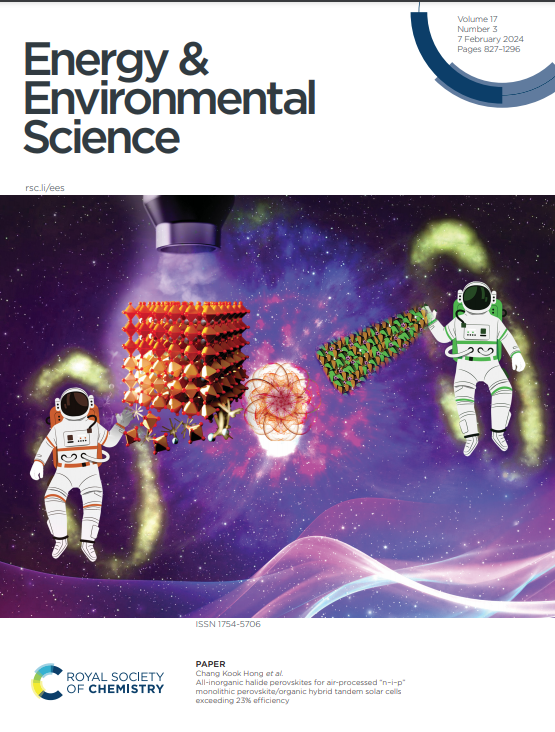Stress Release via Thermodynamic Regulation towards Efficient Flexible Perovskite Solar Cells
IF 32.4
1区 材料科学
Q1 CHEMISTRY, MULTIDISCIPLINARY
引用次数: 0
Abstract
Flexible perovskite solar cells (f-PSCs) have garnered increasing research interest owing to their high power-to-weight ratio and ability to integrate into buildings. However, the mismatch of the thermal expansion coefficient between the perovskite film and substrate will result in strain in the perovskite layer, which significantly impairs the photovoltaic and mechanical performance of f-PSCs. Herein, a thermodynamic regulation strategy was proposed to release the stress of perovskite film, realizing highly efficient f-PSCs with excellent flexibility. Camphor exhibits a strong affinity with Pb2+ or FA+ due to the strong electronegativity of the carbonyl functional group. During annealing, the sublimation of camphor exerts a force on the compressed lattice, driving the transformation of the distorted [PbI6]4− into a symmetry arrangement. Furthermore, the camphor-modified perovskite film exhibits lower defect state density, and the obtained f-PSCs achieved a power conversion efficiency of 24.48%, which exhibited outstanding mechanical and operational stability.求助全文
约1分钟内获得全文
求助全文
来源期刊

Energy & Environmental Science
化学-工程:化工
CiteScore
50.50
自引率
2.20%
发文量
349
审稿时长
2.2 months
期刊介绍:
Energy & Environmental Science, a peer-reviewed scientific journal, publishes original research and review articles covering interdisciplinary topics in the (bio)chemical and (bio)physical sciences, as well as chemical engineering disciplines. Published monthly by the Royal Society of Chemistry (RSC), a not-for-profit publisher, Energy & Environmental Science is recognized as a leading journal. It boasts an impressive impact factor of 8.500 as of 2009, ranking 8th among 140 journals in the category "Chemistry, Multidisciplinary," second among 71 journals in "Energy & Fuels," second among 128 journals in "Engineering, Chemical," and first among 181 scientific journals in "Environmental Sciences."
Energy & Environmental Science publishes various types of articles, including Research Papers (original scientific work), Review Articles, Perspectives, and Minireviews (feature review-type articles of broad interest), Communications (original scientific work of an urgent nature), Opinions (personal, often speculative viewpoints or hypotheses on current topics), and Analysis Articles (in-depth examination of energy-related issues).
 求助内容:
求助内容: 应助结果提醒方式:
应助结果提醒方式:


